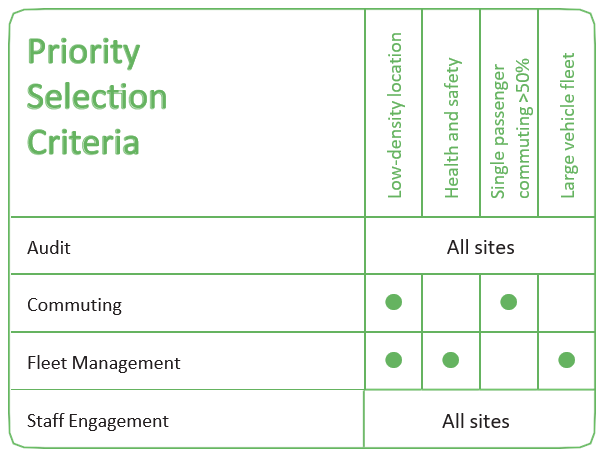Strategy Selection Factors
Once sites have examined commuting patterns and fleet fuel efficiency, they can factor in their unique characteristics to help prioritize strategies. Consider the following:
- Low-density location: Sites located in suburban or rural environments can benefit from use of commuting programs that reduce single-occupant vehicles. Additionally, these sites are likely to experience greater use of fleet vehicles for off-site meetings and events.
- Health and safety: Where air pollution, risk of violent crime, or other safety issues are prevalent, commuting alternatives are less likely to be accepted or applicable. Sites in these areas should focus on improving fleet efficiency and examining opportunities for telecommuting, carpooling, and other behavior change strategies.
- Single passenger commuting >50%: If more than half of staff is composed of single-passenger commuters, supporting and incentivizing alternative commuting methods could make a significant impact.
- Large vehicle fleet: Sites with large fleets can experience the greatest benefit from optimized vehicle fuel efficiency, particularly if many of the vehicles have fuel efficiencies lower than 6 kilometers per liter (km/L) (15 miles per gallon (mpg))


